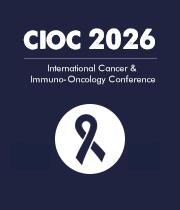Title : Diagnostic yield and safety of navigational bronchoscopy techniques versus conventional methods for peripheral pulmonary nodules: A systematic review and meta-analysis of randomized controlled trials
Abstract:
Background: Navigational bronchoscopy (NB) techniques, such as electromagnetic navigation bronchoscopy (ENB), virtual bronchoscopic navigation (VBN), and others, have been developed to improve lesion localization and sampling of peripheral pulmonary nodules (PPN). However, their comparative efficacy over conventional, non-navigational methods remains uncertain.
Methods: We systematically searched PubMed, Embase, Web of Science, and Cochrane databases from inception to August 2025 for randomized controlled trials (RCTs) comparing the diagnostic yield of NB with conventional methods in patients with peripheral pulmonary nodules. We pooled risk ratios (RR) with a 95% confidence interval (CI) using a random effects model and computed heterogeneity using I2. Statistical Analysis was performed using R software (version 4.5.0).
Results: We included 10 RCTs comprising 2331 patients, of whom 1191 (51%) were randomized to the NB group. Pooled analyses showed a statistically significant increase in diagnostic yield when NB was used either alone or in combination with other methods (RR 1.07; 95% CI 1.01–1.14; p=0.018; I²=28.7%; Figure 1). Subgroup analyses showed non-significant increase in diagnostic yield for VBN (RR 1.09; 95% CI 0.99–1.19; p=0.090; I²=49.6%; Figure 2) and ENB (RR 1.07; 95% CI 1.00–1.15; p=0.055; I²=0%; Figure 3). The rate of all adverse effects was not significantly different between the groups (RR 0.73; 95% CI 0.38–1.41; p=0.347; I²=55%; Figure 4) including pneumothorax rates (RR 0.57; 95% CI 0.21–1.51; p=0.255; I²=54.5%; Figure 5).
Conclusion: Navigational bronchoscopy offers a statistically significant improvement in diagnostic yield compared with conventional bronchoscopy, without increasing the risk of adverse events including pneumothorax.
Keywords: navigational bronchoscopy, electromagnetic navigation bronchoscopy, virtual bronchoscopic navigation peripheral pulmonary nodules.



